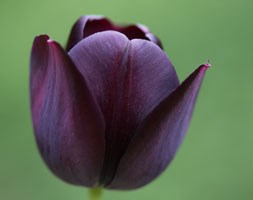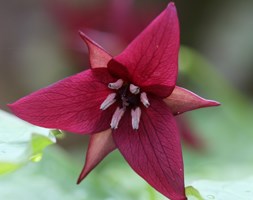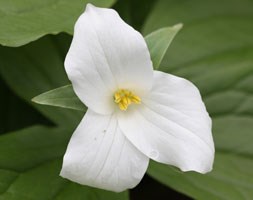Price reductions at Crocus
by Sarah - October 26th, 2013.Filed under: Crocus, Price Reductions.
Crocus reduced the price on these products today
Tulipa ‘Antoinette’ (PBR) (Single late tulip bulbs) was £2.99 now £1.99
Position: full sun Soil: fertile, well-drained soil Rate of growth: average Flowering period: April to May Flower colour: multicoloured Hardiness: fully hardy Bulb size: 10/11 The flowers of this unique tulip will change colour (quite dramatically) as they age. Initially glowing golden yellow, you will start to see hints of blush pink towards the petals edges before they turn a richer shade of salmon pink. When grown in a large cluster, it would not be unusual to have flowers in varying degrees of transformation, so the overall effect is a soft and fuzzy raspberry cream. Delicious! Garden care: In September to December plant bulbs 15-20cm deep and 10-15cm apart in fertile, well-drained soil. Alternatively, allow 7-9 bulbs per 30cm sq. After flowering dead-head and apply a balanced liquid fertiliser each week for the first month. Once the foliage has died down naturally lift the bulbs and store in a cool greenhouse.
Eremurus stenophyllus (foxtail lily bulbs) was £2.99 now £1.99
Position: full sun Soil: fertile, sandy, well-drained soil Rate of growth: average Flowering period: June and July Flower colour: dark yellow Other features: strap shaped, bluish green leaves Hardiness: fully hardy Soaring, slender spikes of dark yellow flowers in early and midsummer rising above strap shaped, bluish-green leaves. This spectacular foxtail lily is perfect for creating a bold statement in a sunny, well-drained border. The yellow flowers open from the base of the spike and darken as they age, creating a two-tone effect. It’s best partnered with other late spring flowering perennials and tall grasses which help to mask the plant’s short lived foliage. Foxtail lilies need to be planted in fertile but well-drained soil with the crown not far below soil level. They start to grow in late winter and spring, gathering their strength before they produce their towering flower spikes in summer. Each flower spike has hundreds of flowers which open from the bottom upwards, creating a stunning effect. They thrive in the sunniest spot in the garden, especially if the base of the plant isn’t shaded as this can decrease the number of flowering spikes produced. Garden care: In September every three to five years carefully lift and divide congested clumps. Replant the strongest crown on a layer of sharp grit, spreading out the roots and covering them with a thin (5cm/2in) layer of soil. In frost-prone areas cover with a dry mulch of fern leaves.
Narcissus ‘Jetfire’ (cyclamineus daffodil bulbs) was £2.99 now £2.49
Position: full sun or partial shade Soil: well-drained soil (for container-grown bulbs use two parts John Innes No2 compost to one part sharp grit) Rate of growth: average Flowering period: March and April Flower colour: yellow Other features: narrow, strap-like leaves; contact with the sap may cause skin irritation Hardiness: hardy Bulb Size: 10/12 The dramatically swept back golden yellow petals surround a bright orange trumpet, giving this sturdy daffodil a windswept look. They appear in early spring and are ideal for naturalising in bold drifts where they will carpet the ground with their golden flowers. Also suitable for pots if space is limited, so their bright and cheerful colour can be enjoyed close at hand. Garden care: Plant 10-15cm (4-6in) deep from late summer to early autumn. After flowering feed with a balanced fertiliser, dead-head and allow the leaves to die back naturally.
Tulipa ‘Queen of Night’ (single late tulip bulbs) was £3.49 now £2.99
Position: full sun Soil: fertile, well-drained soil Rate of growth: average Flowering period: Apr-May Flower colour: purple-black Other features: excellent cut-flowers Hardiness: fully hardy Bulb size: 12/+ These are probably the best loved of the deep purple tulips. Their velvety, dark maroon, single, cup-shaped flowers on straight stems in May are stunning, so they do deserve their acclaim. The almost-black tulips work well in a ‘bruised’ coloured border, planted between other plum-coloured flowers and foliage plants. Shown here photographed with tulip ‘Shirley’ Garden care: In September to December plant bulbs 15-20cm deep and 10-15cm apart in fertile, well-drained soil. Alternatively, allow 7-9 bulbs per 30cm sq. After flowering dead-head and apply a balanced liquid fertiliser each week for the first month. Once the foliage has died down naturally lift the bulbs and store in a cool greenhouse.
Allium hollandicum ‘Purple Sensation’ (Dutch garlic bulbs) was £3.49 now £2.99
Position: full sun Soil: fertile, well-drained soil Rate of growth: average Flowering period: June Hardiness: fully hardy Bulb size:10/12 Strap-shaped grey-green leaves start to die back before the densely packed umbels of deep violet, star-shaped flowers appear in early summer. Its striking architectural silhouette makes it particularly well suited to gravel or prairie-style planting schemes. Garden care: Plant bulbs 15cm deep and 15cm apart to enjoy the full effect of the flowers. Avoid excessive soil moisture, and split and divide large clumps in autumn or spring.
Eremurus x isabellinus ‘Cleopatra’ (foxtail lily bulbs) was £3.49 now £2.99
Position:full sun Soil:fertile, sandy, well-drained soil, including alkaline soil Rate of growth: fast Flowering period: June and July Hardiness: fully hardy Bulb size: grade one (ie. the largest) Stately, slender spikes packed with burnt orange flowers soar above strap shape shape, bluish-green leaves in early and mid summer. This spectacular foxtail lily makes a bold statement towards the back of a sunny, well-drained border. It’s best partnered with late-flowering perennials and tall grasses which help to mask the plant’s short lived foliage. Foxtail lilies need to be planted in fertile but well-drained soil with the crown not far below soil level. They start to grow in late winter and spring, gathering their strength before they produce their towering flower spikes in summer. Each flower spike has hundres of flowers which open from the bottom upwards, creating a stunning effect. They thrive in the sunniest spot in the garden, especially if the base of the plant isn’t shaded as this can decrease the number of flowering spikes produced. Garden care: In September every three to five years carefully lift and divide congested clumps. Replant the strongest crown on a layer of sharp grit, spreading out the roots and covering them with a thin (5cm/2in) layer of soil. In frost-prone areas cover with a dry mulch of fern leaves.
Tulipa ‘Blue Heron’ (fringed tulip bulbs) was £5.99 now £3.99
Position: full sun Soil: fertile, well-drained soil Rate of growth: average Flowering period: Apr-May Flower colour: violet-blue Other features: excellent cut-flowers Hardiness: fully hardy Bulb size: 11/12 The violet-blue open flowers have a darker centre and an attractive pale lilac frilly edge that resembles hoar frosting. They are long lasting, either in the border or as cut flowers. Garden care: In September to December plant bulbs 15-20cm deep and 10-15cm apart in fertile, well-drained soil. Alternatively, allow 7-9 bulbs per 30cm sq. After flowering dead-head and apply a balanced liquid fertiliser each week for the first month. Once the foliage has died down naturally lift the bulbs and store in a cool greenhouse.
Trillium erectum (birthroot bulbs) was £5.99 now £3.99
Position: deep or partial shade Soil: humus-rich, moist, well-drained soil Rate of growth: average Flowering period: April Hardiness: fully hardy The flowers on this variety can be variable, and can appear in shades of white, yellow or purple. They are however usually a deep beetroot-red. The other distinguishing feature of this variety is its plain green leaves, so choose this one if you are not a fan of leaf variegation. It is a native of east and north-eastern areas of North America and is very hardy. These plants are quite hard to grow and will take some time to establish large clumps, so they are better suited to the more experienced gardener. Garden care:Plant rhizomes 5cm deep and 5cm apart in autumn. Once planted they are best left undisturbed so they can build up their numbers. Mulch in the autumn with a generous layer of leafmould.
Trillium grandiflorum (American wake-robin bulbs) was £5.99 now £3.99
Position: deep or partial shade Soil: humus-rich, moist, well-drained soil Rate of growth: average Flowering period: April Hardiness: fully hardy This Trillium has been given the Award of Garden Merit by the Royal Horticultura l Society for its top performance in the garden. The luminous white flowers tha t often fade to pink are perfect for brightening up a shady, moist bed or woodland garden in mid to late spring. The large, broad-petalled flowers are a knockout. These plants are quite hard to grow and will take some time to establish large clumps, so they are better suited to the more experienced gardener. Garden care:Plant rhizomes 5cm deep and 5cm apart in autumn. Once planted they are best left undisturbed so they can build up their numbers. Mulch in the autumn with a generous layer of leafmould.















